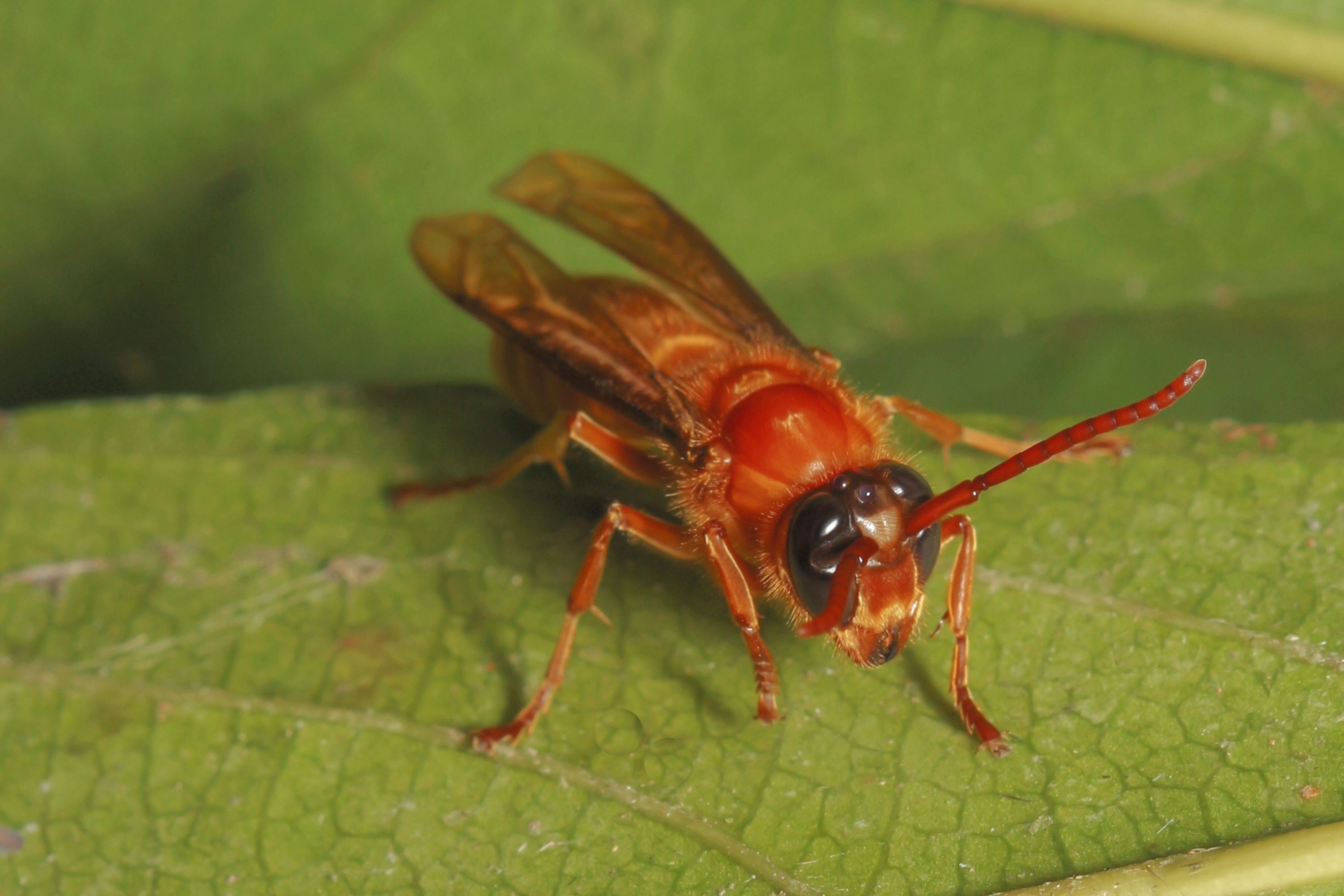Red paper wasp
(Polistes carolina)

Description
Polistes carolina is one of two species of red paper wasp found in the eastern United States (the other being Polistes rubiginosus) and is noted for the finer ridges on its propodeum. It is a social wasp (subfamily Polistinae) in the family Vespidae. They are native to the United States from Texas to Florida, north to New York, and west to Nebraska. The wasp's common name is due to the reddish-brown color of its head and body. P. carolina prefer to build their nests in protected spaces. The first description of Polistes carolina appears in the first volume of Carl Linnaeus' 12th edition of Systema Naturae published in 1767. In this volume, he referred to the species as Vespa carolina. Henri Louis Frédéric de Saussure later moved it to the genus Polistes in 1855 after Pierre Andre Latreille coined the new genus in 1802. P. carolina is within the family Vespidae, which includes nearly all of the eusocial wasps and many of the solitary wasps. It is further placed within the subfamily Polistinae (paper wasps), which is the second-largest of the subfamilies within the Vespidae. The Polistinae contain two main behavioral groups: swarm founding, involving a large numbers of workers and several foundresses, and independent founding, which involve a few workers and foundresses. (P. carolina uses the latter.) Both sexes of P. carolina are about 25-32 mm (0.98-1.26 in) long with black wings of lengths ranging from 15-25 mm (0.59-0.98 in). P. carolina is often confused with P. rubiginosus due to its strikingly similar reddish-brown coloring. Females can be separated by the bare genae of P. carolina in contrast to the silvery pubescence on the genae P. rubiginosus. Both sexes can also be differentiated by the coarser transverse ridging of the propodeum of P. rubiginosus when compared with P. carolina. Additionally, female P. carolina specimens have mostly bare malar spaces (the distance between the lower eye orbit and the mouth). P. carolina is most commonly found in the eastern United States (along with another "red paper wasp", Polistes rubiginosus) from Nebraska to Texas and along the Atlantic coast from New York to Florida. It has also been recorded as an adventitious species in Ontario, Canada, and was introduced to Bermuda. It prefers to nest in protected areas such as hollow trees and is often observed in woodlands. However, given the opportunity, it will also construct nests near humans, such as the undersides of roofs.
Taxonomic tree:







